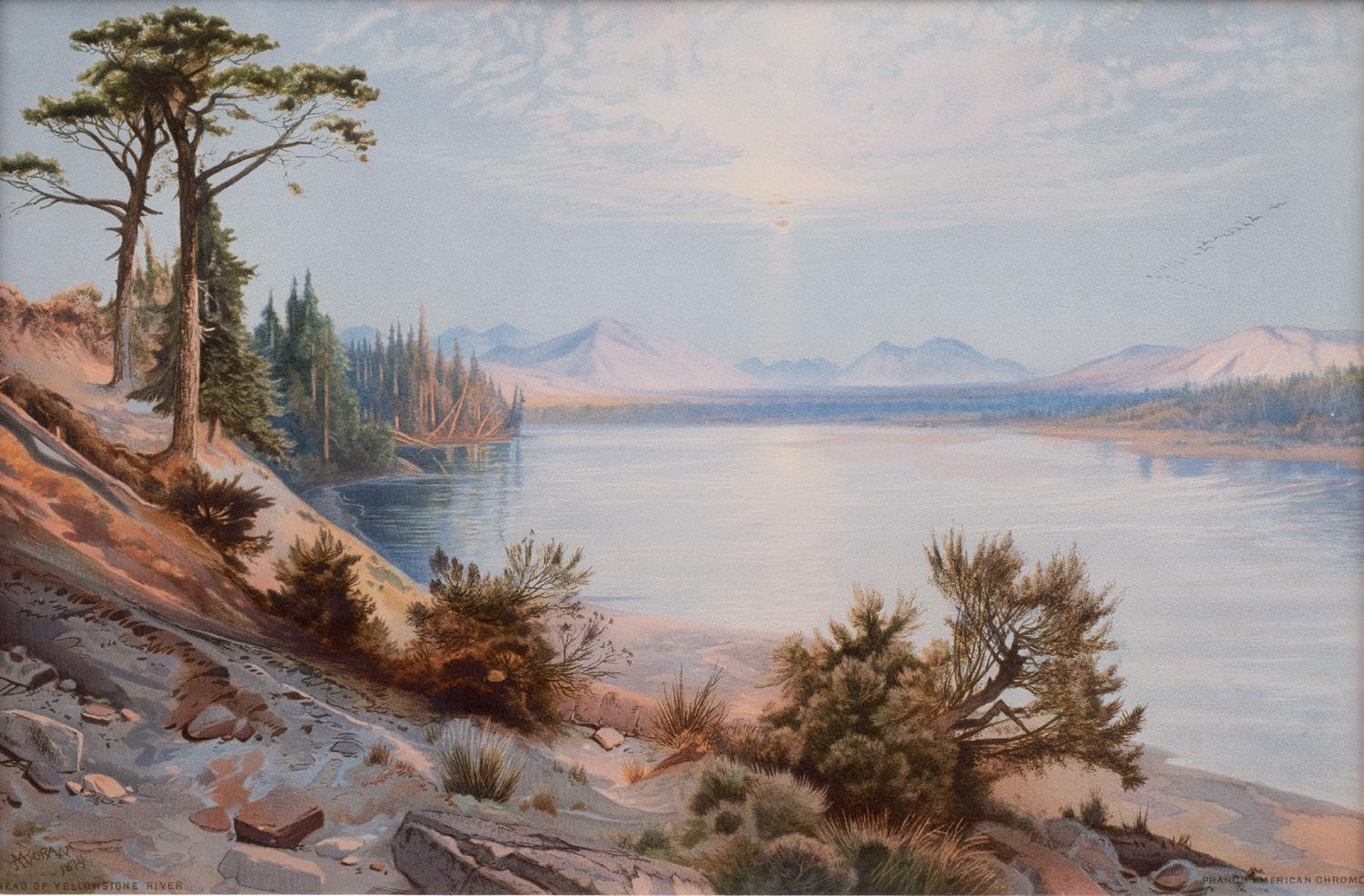
2 minute read
Charles M. Russell 1864–1926
Widely known as the “Cowboy Artist,” Charles Russell earned the name. At the age of sixteen, he moved to Montana to get a “western” education. He spent over a decade working as a cowboy, two years in a remote cabin with a mountain man, and several months living near the Blackfoot tribe in southern Alberta, Canada. Throughout it all, he was sketching, laying the groundwork for his development into one of the most recognized artists of western life. As a painter, sculptor, and storyteller, what he wanted most was to share his passion for those early days on the American frontier.
“Were painters of the American West ever to compete in a popularity contest, Charles M. Russell would win in a landslide. . . . Russell’s charisma was also founded in his rough and tumble experiences on the open cattle range of the Montana frontier in the 1880s; few of his artistic peers could boast of more exposure to the realities of cowboy life. His paintings and sculptures, all of them calculated to draw the viewer into the heart of the action, captivate artistic sophisticates and neophytes alike.”
– Joan Carpenter Troccoli, Painters and the American West


In 1876, the brilliant lithographer Louis Prang released a limited edition portfolio of chromolithographs of Moran’s western landscapes, entitled The Yellowstone National Park, and the Mountain Regions of Portions of Idaho, Nevada, Colorado and Utah , based on images from Moran’s trip with Hayden to the Yellowstone region.
“I received the copy of ‘The Yellowstone National Park’ which you so kindly sent me. It is in every respect a most sumptuous and magnificent work; and the faithfulness with which you have reproduced my water color drawings is beyond praise. It seems to me that ChromoLithography has, in your hands, attained perfection so skillfully have you produced every shade and tone of color in the originals. I naturally feel proud that a work so difficult and extensive should have been produced in America; I hope that your enterprise and skill will meet the appreciation it deserves. I am very truly yours, Thomas Moran.”
– Letter from Moran to Prang following the release of the portfolio
Norton Bush 1834–1894
Norton Bush was a respected landscape artist, best known for his California scenes, as well as tropical landscapes of the Americas. Trained in the style of the Hudson River School, he made his painting debut in New York at the National Academy of Design at the age of seventeen. Influenced by Frederic Edwin Church, he determined to become a landscape painter. Before the age of twenty, Bush set out on a painting excursion that took him from New York to Central America via Cape Horn. For his return, he ventured up the West Coast and settled in San Francisco. Within the year he was exhibiting his new works. During his lifetime, he maintained studios in San Francisco and later in Sacramento, having honed his reputation as a highly skilled and popular California painter.



Julian Scott came to prominence as an artist in New York, acclaimed for his Civil War subjects and portraiture. Later in life, he developed an interest in Native American culture after being hired as a special agent for the 1890 U.S. census. Scott was recruited to assess conditions as well as to create images of the Native American subjects, including portraits and village scenes. In time he developed friendships and respectful relationships, prompting several subsequent trips to the American Southwest of his own accord. The region and its peoples had become a source of almost endless inspiration for the artist.
“Now, freshly returned from a private visit to Arizona Territory, he prepared to depict a vanishing culture from a perspective unseen beyond Hopi-land. . . . These impressions of Native American life formed a far different view from that to which the public was normally exposed.”
– Robert Titterton, Julian Scott: Artist of the Civil War and Native America










